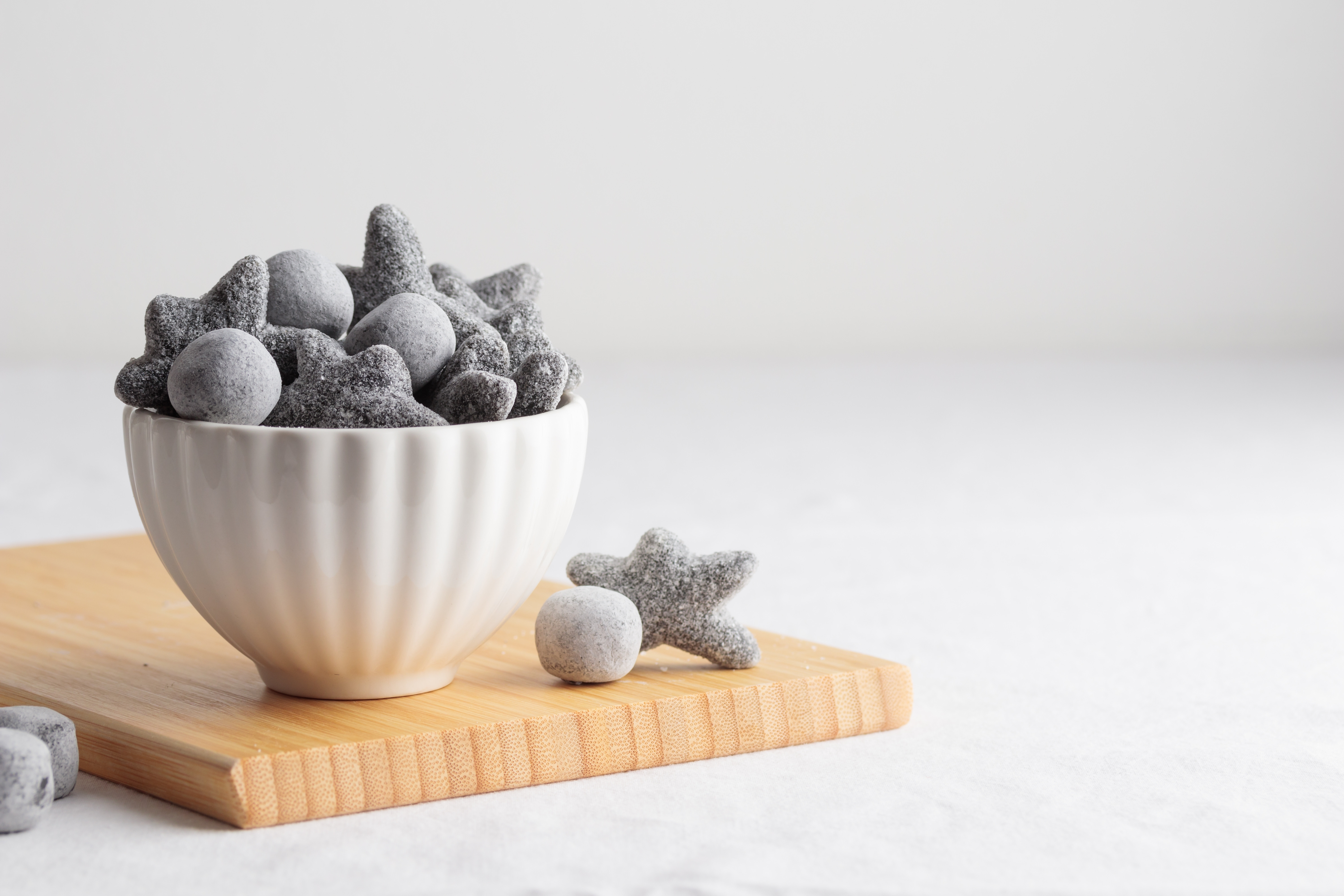In the fascinating world of feline genetics, new discoveries are constantly emerging. Recently, a particularly striking coat pattern has captured the attention of both geneticists and cat enthusiasts. This unique fur coloration, now known as “salmiak” or, more descriptively for English speakers, the “Salty Licorice Cat” pattern, has been identified and studied to understand its genetic origins. Let’s delve into the details of this captivating coat color variant and explore how the Wisdom Panel team played a crucial role in unraveling its genetic mysteries.
The Salty Licorice Cat Emerges: A Striking New Coat Pattern
The story of the salty licorice cat began in 2007 in central Finland, where observers noted domestic cats with an unusual fur pattern. These cats were part of a feral population predominantly composed of black and black-and-white cats. What set these cats apart was their seemingly normal black-and-white “tuxedo” coloration, but with an intriguing twist: a subtle gradation of color within each hair on their colored areas. This resulted in hairs that were colored at the base and tipped with white, creating a distinctive, frosted appearance.
Since their initial discovery, salty licorice cats have remained a rare sight in central Finland. They are believed to originate from the same wild cat population, and this coat pattern has only been observed in non-pedigreed cats. Initially, it was uncertain whether these cats could reproduce, as all captured cats were neutered. However, recent evidence has confirmed their reproductive capability, with a salty licorice cat documented giving birth to a litter of four kittens, ensuring the continuation of this unique trait.
Intrigued by the striking appearance of these cats and possessing a valuable genetic sample, researchers at the University of Helsinki sought the expertise of the Wisdom Panel team to investigate the genetic basis of this novel coat color. Wisdom Panel, known for its leadership in feline genetic research, was eager to contribute to understanding this intriguing feline feature.
Unraveling the Genetics of the Salty Licorice Coat
The initial phase of the research involved genotyping known coat color variants using the MyCatDNA™ panel screening test. This analysis revealed that the distinctive white hairs observed in these cats could not be explained by any previously identified genetic factors. This discovery further emphasized the novelty of the salty licorice coat pattern.
Driven by this intriguing finding, the University of Helsinki researchers broadened their investigation by appealing to the public through a national newspaper. This outreach proved successful, leading to the identification of more cats exhibiting the same unique coat pattern. Importantly, the study expanded to reveal that the salty licorice pattern wasn’t limited to solid black cats; it was also found in cats with blue, brown tabby, and tortoiseshell coat colors, indicating a broader genetic mechanism at play.
Further genotyping using the MyCatDNA panel test reinforced the conclusion that the atypical white patterning had a novel genetic origin. Globally, white patterning and full white color in cats, both pedigreed and non-pedigreed, are largely attributed to two common variants of the KIT gene (also known as the White, or W locus). Additionally, the characteristic white paws seen in Birman cats are linked to another variant within the KIT gene. Given the Finnish origin of the salty licorice cats and the visual similarity to the popular local salty licorice candy, researchers hypothesized that the KIT gene might also be involved in this newly discovered pattern. Consequently, drawing inspiration from its Finnish roots and appearance, they named this color “salmiak,” the Finnish word for salty licorice.
 A bowl of salty licorice candy on a wooden board.
A bowl of salty licorice candy on a wooden board.
To deepen the collaborative investigation with the University of Helsinki, two salmiak-colored cats underwent whole-genome sequencing. Researchers focused their exploration on the KIT gene region. Initial analysis did not reveal any unique variants within the coding sequence of the KIT gene itself. However, meticulous visual inspection of the sequence region uncovered a significant deletion located near the KIT gene in both salmiak cats. This large deletion was identified as a potential factor influencing gene expression and, consequently, the salty licorice coat pattern. Subsequent genotyping of a broader population of Finnish domestic cats for this newly discovered variant confirmed a strong correlation: the novel KIT variant was consistently present in cats with the salmiak appearance. The research further established that the salmiak color pattern is recessively inherited. This means that a cat must inherit one copy of the salmiak variant from each parent for the trait to be visibly expressed in its coat.
Final Thoughts on the Salty Licorice Cat
The discovery of the salmiak variant significantly enriches our understanding of the complex world of feline coat color genetics. Beyond academic interest, this knowledge holds potential practical value, particularly for cat breeding. Understanding the genetic basis of the salty licorice cat pattern could contribute to efforts aimed at preserving and potentially propagating this unique and visually striking trait within our feline companions, ensuring that the salty licorice cat continues to grace the feline world with its distinctive charm.

